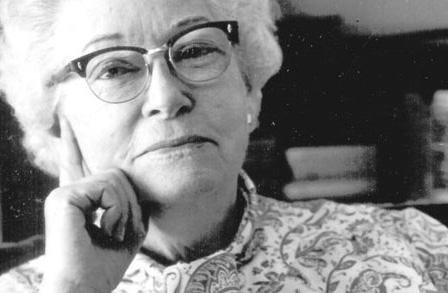
Meet The Trailblazers
Female Psychedelics Pioneers
We can’t properly celebrate women in psychedelics without taking the time to acknowledge just a few of the notable female contributors to the foundations of psychedelics & plant medicine.
Maria Sabina
She guided ailing patients through healing rituals called veladas since her childhood and earned something of a reputation around her community.
-
She guided ailing patients through healing rituals called veladas since her childhood and earned something of a reputation around her community.
But it wasn’t until an amateur mushroom enthusiast and bank executive named R. Gordon Wasson tracked her down that María Sabina became something like a global psychedelic superstar and inadvertently sparked a cultural revolution that reverberates to this day.
A passionate student of ethnomycology, Wasson was drawn to Mexico after learning of Spanish codexes that spoke of Aztec mushroom rituals. After several trips, he finally made his way to Huatla de Jiménez, where a local community leader introduced him to María Sabina. Initially reluctant to perform the ritual on someone who wasn’t technically sick, María Sabina eventually acquiesced and performed the velada on the curious interloper, who ended up returning eight more times with support from everyone from Life Magazine to the CIA (who experimented with mushrooms as part of their infamous mind-control program, MK Ultra.)
And unsurprisingly, after Life published a detailed profile of the curandera, Huatla de Jiménez quickly became a tourist destination for adventurous young mystics seeking an authentic velada – many of whom abused the ceremony as a temporary thrill rather than respecting the ancient wisdom behind the ritual. In the end, María Sabina was shunned by her community for commercializing their traditions and claimed the niños santos lost their power after so much misuse. She died in poverty in 1985, at 91 years old, but not before tending to the likes of Bob Dylan and John Lennon.
Adelle Davis
The first woman to publish a book on her personal LSD experiences
-
A writer, and leading American nutritionist throughout the ‘60s and ‘70s. She was the first woman to publish (although in her pen name, Jane Dunlap) a full-length book on her LSD experiences, “Exploring Inner Space” (1961).
The book covered five LSD experiences under psychiatrist supervision and insisted on the drug’s ability to help Davis overcome writer’s block, improve her mood, and enhance relationships with her family.
Although the food and health industry disagreed with Davis’ nutritional works, her criticism of and attachment to LSD as a means to “meet God” had a profound influence
Valentina-Wasson
Ethnomycologist & author who published her accounts of psilocybin mushroom healing
-
While men in research relied heavily on their wives for support and documentation, Valentina Wasson was often leading rather than assisting. She first introduced R. Gordon Wasson to the world of mushrooms, though her husband often receives credit for bringing mushrooms to public attention in America. She then led the excursion that introduced Westerners to Maria Sabina and bravely published the account of her mushroom trip.
Perhaps the most notable of Valentina’s contributions was creating a connection between psilocybin and various treatments. It was after she experienced her spiritual healing in Sabina’s velada that she proposed psilocybin to treat pain associated with alcoholism, narcotic addiction, mental disorders, and end-of-life care. Later this treatment was reinforced by Laura Huxley, Joan Halifax, and many innovative researchers today.
Valentina Wasson helped build the cultural bridge that would lead to our current and developing understanding of psilocybin’s therapeutic benefits. Her groundbreaking interview is among many firsthand accounts that fueled psychedelic research.
Mary Barnard
Poet - Her insights reinforced the “sacred” purposes of psychedelic substances
-
As noted, many cultures have used psychedelics for sacred purposes, yet North American culture has dismissed such usage by and large.
That’s where we thank Mary Barnard, an American poet best known for her translation of Sappho’s works. Barnard’s insights reinforce the “sacred” purposes of psychedelic substances. She suggested that mind-altering plants could be the origin of the sacred or spiritual, performing as “vehicles for a special kind of experience adaptable to the use of most religions that acknowledge an otherworld and permit its exploration.”
The notion that psychedelics are the basis for imagination and spiritual beliefs has helped pave the way to destigmatization.
Joan Halifax
Known for her work on LSD research for terminally-ill cancer patients
-
Roshi Joan Halifax, PhD. Halifax is known for her work on an LSD research project with terminally-ill cancer patients and a co-authored book, “The Human Encounter with Death.”
Halifax has stated that her work is based on transforming the experiences of clinicians, patients, and the institutions that serve dying people. Throughout her career, Halifax maintains that LSD can help patients change their views of death. One patient, in particular, recounts how, “In the end, he was much more accepting of his mortality as his death drew near.”
Laura Huxley
Helped trail blaze by administering LSD to assist the dying
-
Laura Huxley helped trailblaze by administering LSD to assist the dying. Throughout their marriage, Laura became an integral partner in Aldous Huxley’s psychedelic experiments.
Upon Aldous’ final hours, Laura proposed the drug to decrease his anxiety and assist in his transition to the unknown. In the hours leading up to what was referred to by the physicians present as the “most beautiful death,” Laura gave Aldous 100 micrograms of LSD.
Ann Shulgin
Widely known as the “Matriarch of the Psychedelic Movement”
-
American author Ann Shulgin is known as the “Matriarch of the Psychedelic Movement.”
She provided patients with psychedelic-centric therapy in the mid-1980s and ’90s, using a combination of Jungian therapy techniques and reflective doses of MDMA in therapeutic settings.
In her writings, she stressed the potential of these drugs from a Jungian psychoanalytic perspective, as well as their use in combination with hypnotherapy. She often appeared as a speaker at conventions and continued to advocate the use of psychedelics in therapeutic contexts.
Together with her chemist husband Alexander “Sasha," she authored the books PiHKAL and TiHKAL. They developed a systematic way of ranking the effects of the various drugs, known as the Shulgin Rating Scale, with a vocabulary to describe the visual, auditory, and physical sensations.
She also contributed to the books Thanatos to Eros: 35 Years of Psychedelic Exploration, Entheogens and the Future of Religion, Ecstasy: The Complete Guide, The Secret Chief Revealed, Higher Wisdom: Eminent Elders Explore the Continuing Impact of Psychedelics, and Manifesting Minds: A Review of Psychedelics in Science, Medicine, Sex, and Spirituality.
Bia Labate, Ph.D.
Specializes in plant medicine, drug policy, ritualism, shamanism, & Religion
-
Based in San Francisco and hailing from Brazil, Dr. Bia Labate is a queer anthropologist who specializes in plant medicine, drug policy, ritualism, shamanism, and religion.
Dr. Labate currently serves as Executive Director of the Chacruna Institute for Psychedelic Plant Medicines, Public Education and Culture Specialist at MAPS, and as an adjunct faculty member at the East-West Psychology Program at the California Institute of Integral Studies (CIIS)
She has also authored, co-authored, and edited 21 books, two special edition journals, and countless peer-reviewed articles on the topic of psychedelic therapy and drug reform.
Dr. Labate is particularly interested in finding more diverse voices in the psychedelic community: specifically queer people, women, nonbinary folks, and BIPOC operators in the space.
Amanda Feilding
Known as the “hidden hand” behind the renaissance of psychedelic science in Europe
-
Amanda Feilding has been called the ‘hidden hand’ behind the renaissance of psychedelic science, and her contribution to global drug policy reform has also been pivotal and widely acknowledged.
Amanda was first introduced to LSD in the mid-1960s, at the height of the first wave of scientific research into psychedelics. Impressed by its capacity to initiate mystical states of consciousness and heighten creativity, she quickly recognized its transformative and therapeutic power. Inspired by her experiences, she began studying the mechanisms underlying the effects of psychedelic substances and dedicated herself to exploring ways of harnessing their potential to cure sickness and enhance well-being.
In 1996, Amanda set up The Foundation to Further Consciousness, changing its name to the Beckley Foundation in 1998. She realized the potential harms and benefits of cannabis and psychedelics could only be adequately assessed by developing a sound scientific understanding of their mechanisms of action.
Through the Foundation, she began using cutting-edge brain imaging technologies to examine neurophysiological changes underlying altered states of consciousness.
Her long-held aim is to further our understanding of consciousness and how changes in cerebral circulation and neuronal activity underlie the effects of various psychoactive substances so that we can better harness their potential to improve the human condition.
No one can shape the future alone.
Let’s create a community committed to changing consciousness, & let’s do it together!











